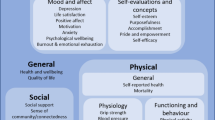Abstract
Purpose
We conducted a randomized controlled trial in partnership with a community-based organization (CBO) to examine the effects of peer mentoring to promote exercise among cancer survivors. At the end of the trial, to prepare for future program implementation on a larger scale, we obtained input from the CBO on the key elements that influenced the decision to collaborate, facilitators and challenges during the trial, and recommendations for program marketing.
Methods
Structured telephone interviews were conducted with ten stakeholders at various job levels within the CBO. Notes of the interviews were coded, and themes were extracted independently by two study members.
Results
Five themes were identified: costs of the partnership, its benefits, importance of communication, match of the trial goals with the CBO’s mission, and achieving a balance between research and job tasks. Techniques to address these themes and improve implementation of the program are described.
Conclusions
The themes identified can guide evidence-based programs in planning implementation that involves partnerships with CBOs.
Similar content being viewed by others
References
American Cancer Society. Cancer treatment and survivorship: facts and figures 2012–2013. Atlanta, GA: American Cancer Society; 2012.
Schmitz KH, Courneya KS, Matthews C, Demark-Wahnefried W, Galvao DA, Pinto BM, et al. American College of Sports Medicine roundtable on exercise guidelines for cancer survivors. Med Sci Sports Exerc. 2010;42(7):1409–26. doi:10.1249/MSS.0b013e3181e0c11200005768-201007000-00023.
Davey-Rothwell MA, Tobin K, Yang C, Sun CJ, Latkin CA. Results of a randomized controlled trial of a peer mentor HIV/STI prevention intervention for women over an 18 month follow-up. AIDS Behav. 2011;15(8):1654–63. doi:10.1007/s10461-011-9943-9.
Ljungberg I, Kroll T, Libin A, Gordon S. Using peer mentoring for people with spinal cord injury to enhance self-efficacy beliefs and prevent medical complications. J Clin Nurs. 2011;20(3–4):351–8. doi:10.1111/j.1365-2702.2010.03432.x.
Sledge SW, Lawless M, Sells D, Widland M, O’Connell MJ, Davidson L. Effectiveness of peer support in reducing readmissions of persons with multiple psychiatric hospitalizations. Psychiatric Service. 2011;62:541–4.
Buman MP, Giacobbi Jr PR, Dzierzewski JM, Aiken Morgan A, McCrae CS, Roberts BL, et al. Peer volunteers improve long-term maintenance of physical activity with older adults: a randomized controlled trial. J Phys Act Health. 2011;8 Suppl 2:S257–66.
Castro CM, Pruitt LA, Buman MP, King AC. Physical activity program delivery by professionals versus volunteers: the TEAM randomized trial. Health Psychol. 2011;30(3):285–94. doi:10.1037/a00219802011-09497-006.
Hooker SP, Seavey W, Weidmer CE, Harvey DJ, Stewart AL, Gillis DE, et al. The California active aging community grant program: translating science into practice to promote physical activity in older adults. Ann Behav Med. 2005;29(3):155–65. doi:10.1207/s15324796abm2903_1.
Wilcox S, Dowda M, Leviton LC, Bartlett-Prescott J, Bazzarre T, Campbell-Voytal K, et al. Active for life: final results from the translation of two physical activity programs. Am J Prev Med. 2008;35(4):340–51. doi:10.1016/j.amepre.2008.07.001S0749-3797(08)00605-3.
Pinto BM, Frierson GM, Rabin C, Trunzo JJ, Marcus BH. Home-based physical activity intervention for breast cancer patients. J Clin Oncol. 2005;23(15):3577–87. doi:10.1200/JCO.2005.03.080.
Pinto BM, Rabin C, Papandonatos GD, Frierson GM, Trunzo JJ, Marcus BH. Maintenance of effects of a home-based physical activity program among breast cancer survivors. Support Care Cancer. 2008;16(11):1279–89. doi:10.1007/s00520-008-0434-0.
Pinto BM, Rabin C, Abdow S, Papandonatos GD. A pilot study on disseminating physical activity promotion among cancer survivors: a brief report. Psychooncology. 2008;17(5):517–21. doi:10.1002/pon.1268.
Dearing JW, Kreuter MW. Designing for diffusion: how can we increase uptake of cancer communication innovations? Patient Educ Couns. 2010;81(Suppl):S100–10. doi:10.1016/j.pec.2010.10.013S0738-3991(10)00621-X.
Green J, Thorogood N. Qualitative methods for health research. 2nd ed. London, England: Sage; 2009.
Braun V, Clarke V. Using thematic analyses in psychology. Qualitative thematic analysis in psychology. Qual Res Psychol. 2006;3:77–101.
Best A, NCIC Working Group on Translational Research and Knowledge Integration, et al. The language and logic of research transfer. Finding common ground. Toronto, Canada: National Cancer Institute of Canada; 2005.
Estabrooks PA, Glasgow RE. Translating effective clinic-based physical activity interventions into practice. Am J Prev Med. 2006;31(4 Suppl):S45–56.
Carpenter D, Nieva V, Albaghal T, et al. Dissemination planning tool. From: Development of a planning tool to guide dissemination of research results. Advances in patient safety: from research to implementation. Vol. 4, Programs, tools and practices. AHRQ Publication no. 05-0021-4 (Vol. 4). Rockville, MD: Agency for Healthcare Research and Quality; 2005
Estabrooks PA, Smith-Ray RL, Dzewaltowski DA, Dowdy D, Lattimore D, Rehaume C, et al. Sustainability of evidence-based community-based PA programs for older adults: lessons from active for life. Trans Behav Med. 2011;1:208–15.
DerAnanian CA, Desai P, Smith-Ray R, Seymour RB, Hughes SL. Perceived versus actual factors associated with adoption and maintenance of an evidence-based physical activity program. Trans Behav Med. 2012;2:209–17.
Brownson R, Ballew P, Dieffenderfer B, Haire-Joshu D, Heath G, Kreuter MW, et al. Evidence-based interventions to promote physical activity: what contributes to dissemination by state health departments. Am J Prev Med. 2007;33(1S):S66–78.
Glasgow RE, Magid DJ, Beck A, Ritzwoller D, Estabrooks PA. Practical clinical trials for translating research to practice: design and measurement recommendations. Med Care. 2005;43(6):551–7.
Acknowledgments
This study was funded by a grant from the National Cancer Institute (R01 CA132854) to the first author. We thank the interviewees for their participation and sharing their perspectives. We also thank Gail Agronick, Ph.D. and Lucy Balanca, B.A. for their contributions. All procedures followed were in accordance with the ethical standards of the responsible committee on human experimentation (institutional and national) and with the Helsinki Declaration of 1975, as revised in 2000. Informed consent was obtained from all patients for being included in the study.
Conflict of Interest
Authors Bernardine Pinto, Marissa Waldemore, and Rochelle Rosen declare that they have no conflicts of interest.
Author information
Authors and Affiliations
Corresponding author
Rights and permissions
About this article
Cite this article
Pinto, B.M., Waldemore, M. & Rosen, R. A Community-Based Partnership to Promote Exercise Among Cancer Survivors: Lessons Learned. Int.J. Behav. Med. 22, 328–335 (2015). https://doi.org/10.1007/s12529-014-9395-5
Published:
Issue Date:
DOI: https://doi.org/10.1007/s12529-014-9395-5




